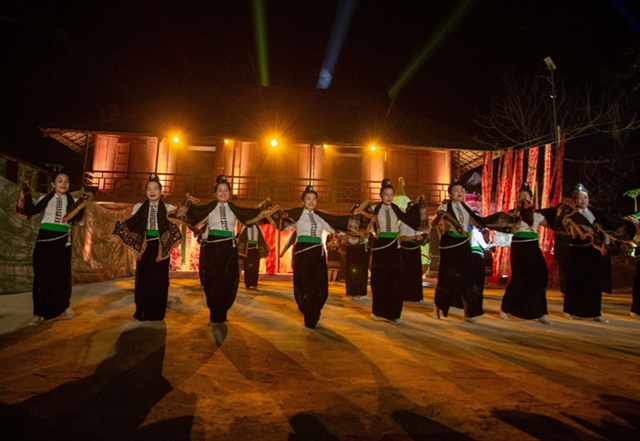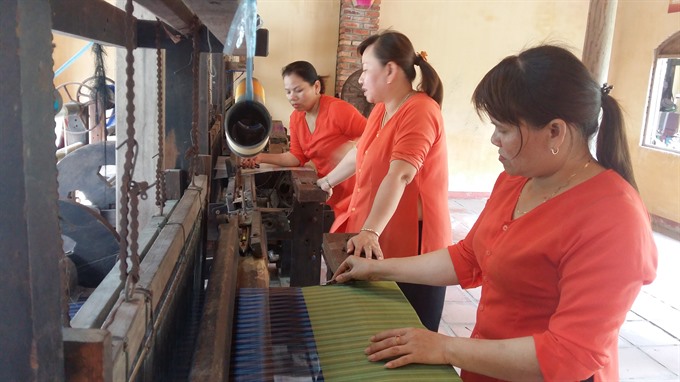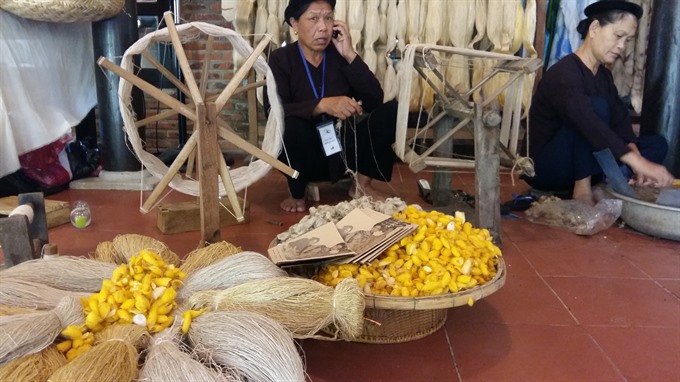 Life & Style
Life & Style

Poor marketing, brand promotion and dull design were blamed as major obstructions for silk trade of Việt Nam expanding to worldwide.
 |
| Raw material: Cocoon displays at the International Silk Festival in Hội An city. |
HỘI AN — Việt Nam is yet to show the world how special its silk is and how skilled its craftswomen and craftsmen are, experts said on Monday.
Furthermore, the domestic silk industry has also not caught up with the times, and has failed to come up with new designs and products to meet the needs of a globalised world.
Poor marketing, weak brand promotion and dull designs are major obstacles preventing the expansion of Vietnamese silk in world markets, they added.
Experts, traders and craftsmen voiced their opinions at a seminar held under the auspices of the International Silk and Brocade Festival in Hội An City.
Eighty local artisans from 12 craft villages in Việt Nam as well as representatives from other Asian countries discussed ways to promote and preserve the silk trade, including boosting exchanges between countries.
“The festival is an opportunity for members of the International Silk Association to review current developments in the traditional trade, and map out future ways for handmade silk in the context of climate change and rapid urbanisation,” said Lê Thái Vũ, chairman of the Quảng Nam Silk Company.
 |
| The weave: A silk weaving demonstration at the Hội An Silk Village in Quảng Nam Province. |
Fei Jianming, General Secretary of the International Silk Association, said the festival honoured the silk trade in Hội An and the world.
“Hội An silk has contributed greatly to the development of silk in the world. Craftsmen from Việt Nam and other countries in the region will take this opportunity to share views on how to promote the trade,” Jianming said.
Jianming, who is also Director of the Hangzhou Silk Culture and Brand Research Centre, said silk villages from Việt Nam should join fairs in China for promoting their products.
Fumio Kato, a project leader with the Japanese International Co-operation Agency (JICA) in Minamibousou City, Japan, said: “Hội An silk and Việt Nam should build a modern silk trade with unique value.
“Silk products must be designed for daily use in the context of rapid globalisation,” Kato told Việt Nam News.
“Việt Nam’s silk should show the world how special it is. You must preserve your silk tradition with new, usable designs for modern days,” he said, adding Việt Nam and Hội An have to perfect every process of silk making in a meticulous manner.
 |
| Tools of the trade: Loom and cocoons for tussore production on show at the International Silk Festival held under the 6th Quảng Nam Heritage Festival. |
A good living
Kato also warned that craftsmen need to make a good living from silk production if the country does not want the traditional trade to disappear soon.
He said the International Labour Organisation (ILO), UNESCO and JICA have supported Hội An in mapping a sustainable way for the future of the traditional trade.
He warned against producing poor quality silk in the pursuit of profit, saying Việt Nam must persuade picky customers about the real value of traditional silk.
Lương Thanh Hạnh, 30, who revived a traditional silk village in Thái Bình Province three years ago, said businesses have yet to support craftsmen with marketing and promotion at world trade fairs.
She said Nam Cao Village – known for its handmade tussore, has recovered using new production and marketing methods.
“Customers prefer handmade and chemical-free tussore,” Hạnh said.
She said more than 1,000 tussore towels and scarves were being shipped to Japan each month, excluding thousands of products sold at domestic shops.
Lý Thị Diễm Hồng of the Văn Giáo Silk Village populated by the Khmer ethnic community in An Giang Province, said the village co-operative has been struggling to design marketable products and sell them.
She said their designs were still limited to Buddhist motifs, pagodas, elephants and the Buddha, with scarves and sarongs being the most popular products. — VNS
The silk trade in Quảng Nam developed during the reign of the Nguyễn Dynasty. It was influenced by the Chăm people in the coastal central region. Lê Thái Vũ, general director of the Quảng Nam Silk Company, successfully re-discovered the mulberry plant that the Chăm had used during an expedition in Quế Sơn District in 2012, after Japanese cultural researchers had failed in their efforts to find the plant. The ongoing festival also presents the creations of French fashion designers, major Chinese fashion houses and famous silk villages of Việt Nam. |